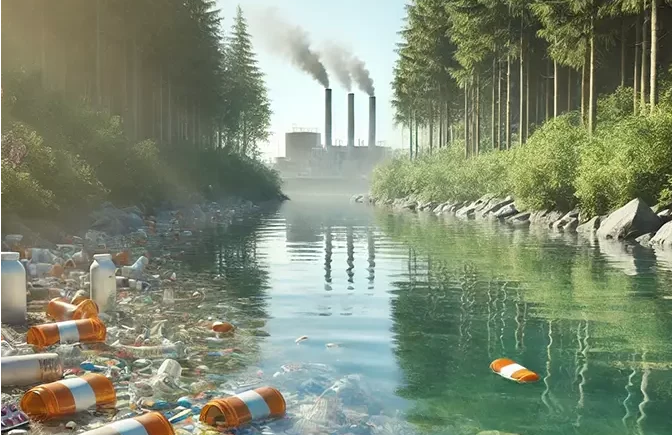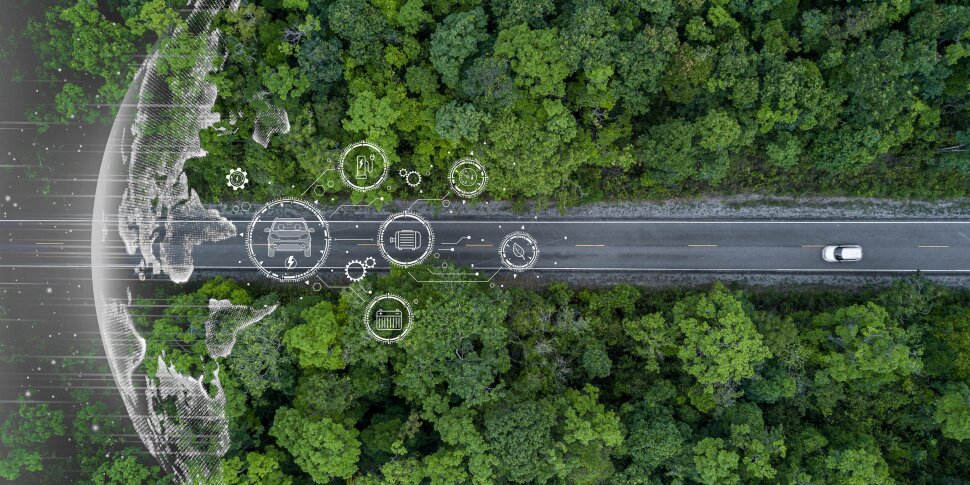Effects of Hardwood Biomass Variability on Biochar Properties: Insights from Wood Waste Utilization
Downloads
Doi:10.28991/HEF-2025-06-01-02
Full Text:PDF
Downloads
Papageorgiou, A., Azzi, E. S., Enell, A., & Sundberg, C. (2021). Biochar produced from wood waste for soil remediation in Sweden: Carbon sequestration and other environmental impacts. Science of the total environment, 776, 145953. doi:10.1016/j.scitotenv.2021.145953.
Luo, L., Xu, C., Chen, Z., & Zhang, S. (2015). Properties of biomass-derived biochars: Combined effects of operating conditions and biomass types. Bioresource Technology, 192, 83-89. doi:10.1016/j.biortech.2015.05.054.
He, M., Xu, Z., Sun, Y., Chan, P. S., Lui, I., & Tsang, D. C. W. (2021). Critical impacts of pyrolysis conditions and activation methods on application-oriented production of wood waste-derived biochar. Bioresource Technology, 341, 125811. doi:10.1016/j.biortech.2021.125811.
Adhikari, S., Moon, E., Paz-Ferreiro, J., & Timms, W. (2024). Comparative analysis of biochar carbon stability methods and implications for carbon credits. Science of the Total Environment, 914, 169607. doi:10.1016/j.scitotenv.2023.169607.
Gondim, R. S., Muniz, C. R., Lima, C. E. P., & Santos, C. L. A. Dos. (2018). Explaining the water-holding capacity of biochar by scanning electron microscope images. Revista Caatinga, 31(4), 972–979. doi:10.1590/1983-21252018V31N420RC.
Wang, L., Chen, L., Tsang, D. C. W., Guo, B., Yang, J., Shen, Z., Hou, D., Ok, Y. S., & Poon, C. S. (2020). Biochar as green additives in cement-based composites with carbon dioxide curing. Journal of Cleaner Production, 258, 120678. doi:10.1016/j.jclepro.2020.120678.
Liu, Z., Dugan, B., Masiello, C. A., & Gonnermann, H. M. (2017). Biochar particle size, shape, and porosity act together to influence soil water properties. PLoS ONE, 12(6), 179079. doi:10.1371/journal.pone.0179079.
Cervera-Mata, A., Aranda, V., Ontiveros-Ortega, A., Comino, F., Martín-García, J. M., Vela-Cano, M., & Delgado, G. (2021). Hydrophobicity and surface free energy to assess spent coffee grounds as soil amendment. Relationships with soil quality. Catena, 196, 104826. doi:10.1016/j.catena.2020.104826.
Edeh, I. G., Mašek, O., & Buss, W. (2020). A meta-analysis on biochar's effects on soil water properties – New insights and future research challenges. Science of the Total Environment, 714, 136857. doi:10.1016/j.scitotenv.2020.136857.
Weber, K., & Quicker, P. (2018). Properties of biochar. Fuel, 217, 240–261. doi:10.1016/j.fuel.2017.12.054.
Huang, H., Cai, W. L., Zheng, Q., Chen, P. N., Huang, C. R., Zeng, Q. J., ... & Kushvaha, V. (2020). Gas permeability in soil amended with biochar at different compaction states. IOP Conference Series: Earth and Environmental Science, 463, 1, 012073. doi:10.1088/1755-1315/463/1/012073.
Adhikari, S., Mahmud, M. A. P., Nguyen, M. D., & Timms, W. (2023). Evaluating fundamental biochar properties in relation to water holding capacity. Chemosphere, 328, 138620. doi:10.1016/j.chemosphere.2023.138620.
Guo, S., Li, Y., Wang, Y., Wang, L., Sun, Y., & Liu, L. (2022). Recent advances in biochar-based adsorbents for CO2 capture. Carbon Capture Science and Technology, 4, 100059. doi:10.1016/j.ccst.2022.100059.
Wu, P., Singh, B. P., Wang, H., Jia, Z., Wang, Y., & Chen, W. (2023). Bibliometric analysis of biochar research in 2021: a critical review for development, hotspots and trend directions. Biochar, 5(1), 6. doi:10.1007/s42773-023-00204-2.
Cayuela, M. L., Jeffery, S., & van Zwieten, L. (2015). The molar H: COrg ratio of biochar is a key factor in mitigating N2O emissions from soil. Agriculture, Ecosystems and Environment, 202, 135–138. doi:10.1016/j.agee.2014.12.015.
Cao, Q., An, T., Xie, J., Liu, Y., Xing, L., Ling, X., & Chen, C. (2022). Insight to the physiochemical properties and DOM of biochar under different pyrolysis temperature and modification conditions. Journal of Analytical and Applied Pyrolysis, 166, 105590. doi:10.1016/j.jaap.2022.105590.
Das, S., Mohanty, S., Sahu, G., Rana, M., & Pilli, K. (2021). Biochar: A Sustainable Approach for Improving Soil Health and Environment. Soil Erosion - Current Challenges and Future Perspectives in a Changing World. IntechOpen. doi:10.5772/intechopen.97136.
Uroič Š tefanko, A., & Leszczynska, D. (2020). Impact of Biomass Source and Pyrolysis Parameters on Physicochemical Properties of Biochar Manufactured for Innovative Applications. Frontiers in Energy Research, 8, 138. doi:10.3389/fenrg.2020.00138.
Qiu, L., Li, C., Zhang, S., Wang, S., Li, B., Cui, Z., Tang, Y., & Hu, X. (2023). Distinct property of biochar from pyrolysis of poplar wood, bark, and leaves of the same origin. Industrial Crops and Products, 202, 117001. doi:10.1016/j.indcrop.2023.117001.
Xu, W., Xu, H., Delgado-Baquerizo, M., Gundale, M. J., Zou, X., & Ruan, H. (2023). Global meta-analysis reveals positive effects of biochar on soil microbial diversity. Geoderma, 436, 116528. doi:10.1016/j.geoderma.2023.116528.
Murtaza, G., Ahmed, Z., Usman, M., Iqbal, R., Zulfiqar, F., Tariq, A., & Ditta, A. (2024). Physicochemical properties and performance of non-woody derived biochars for the sustainable removal of aquatic pollutants: A systematic review. Chemosphere, 359. doi:10.1016/j.chemosphere.2024.142368.
Tiwari, M., Dirbeba, M. J., Lehmusto, J., Yrjas, P., & Vinu, R. (2024). Analytical and applied pyrolysis of challenging biomass feedstocks: Effect of pyrolysis conditions on product yield and composition. Journal of Analytical and Applied Pyrolysis, 177, 106355. doi:10.1016/j.jaap.2024.106355.
Li, X., Liu, N., Zhang, J., Sun, Z., Fu, S., Zhan, X., Yang, J., Zhou, R., Zhang, H., Liu, H., & Han, X. (2023). Pyrolysis temperature had effects on the physicochemical properties of biochar. Plant, Soil and Environment, 69(8), 363–373. doi:10.17221/444/2022-PSE.
Jiao, H., Guo, X., Shu, F., Zhang, Q., Wu, W., Jin, Y., & Jiang, B. (2025). Structure-property-function relationships of wood-based activated carbon in energy and environment materials. Separation and Purification Technology, 353. doi:10.1016/j.seppur.2024.128607.
Boraah, N., Chakma, S., & Kaushal, P. (2023). Optimum features of wood-based biochars: A characterization study. Journal of Environmental Chemical Engineering, 11(3), 109976. doi:10.1016/j.jece.2023.109976.
Čabalová, I., Bélik, M., Kučerová, V., Jurczyková, T., & Bubeníková, T. (2023). Evaluation of Chemical and Morphological Properties of Spruce Wood Stored in the Natural Environment. Polymers, 15(24), 4734. doi:10.3390/polym15244734.
K N, Y., T, P. D., P, S., S, K., R, Y. K., Varjani, S., AdishKumar, S., Kumar, G., & J, R. B. (2022). Lignocellulosic biomass-based pyrolysis: A comprehensive review. Chemosphere, 286, 131824. doi:10.1016/j.chemosphere.2021.131824.
Ling, S., Kaplan, D. L., & Buehler, M. J. (2018). Nanofibrils in nature and materials engineering. Nature Reviews Materials, 3(4), 1–15. doi:10.1038/natrevmats.2018.16.
Werdin, J., Fletcher, T. D., Rayner, J. P., Williams, N. S. G., & Farrell, C. (2020). Biochar made from low density wood has greater plant available water than biochar made from high density wood. Science of the Total Environment, 705, 135856. doi:10.1016/j.scitotenv.2019.135856.
Zhang, J., & You, C. (2013). Water holding capacity and absorption properties of wood chars. Energy and Fuels, 27(5), 2643–2648. doi:10.1021/ef4000769.
Guizani, C., Jeguirim, M., Valin, S., Peyrot, M., & Salvador, S. (2019). The Heat Treatment Severity Index: A new metric correlated to the properties of biochars obtained from entrained flow pyrolysis of biomass. Fuel, 244, 61–68. doi:10.1016/j.fuel.2019.01.170.
Nurhadi, N., Rianda, S., Irawan, C., & Pramono, G. P. (2021). Biochar production investigation from pyrolysis of lamtoro wood as a coal blend for fuel substitution in steam power plants. IOP Conference Series: Earth and Environmental Science, 749(1), 12037. doi:10.1088/1755-1315/749/1/012037.
Lataf, A., Jozefczak, M., Vandecasteele, B., Viaene, J., Schreurs, S., Carleer, R., Yperman, J., Marchal, W., Cuypers, A., & Vandamme, D. (2022). The effect of pyrolysis temperature and feedstock on biochar agronomic properties. Journal of Analytical and Applied Pyrolysis, 168, 105728. doi:10.1016/j.jaap.2022.105728.
Jamal, M. U., & Fletcher, A. J. (2023). Design of Experiments Study on Scottish Wood Biochars and Process Parameter Influence on Final Biochar Characteristics. Bioenergy Research, 16(4), 2342–2355. doi:10.1007/s12155-023-10595-6.
Sahoo, S. S., Vijay, V. K., Chandra, R., & Kumar, H. (2021). Production and characterization of biochar produced from slow pyrolysis of pigeon pea stalk and bamboo. Cleaner Engineering and Technology, 3, 100101. doi:10.1016/j.clet.2021.100101.
Moya, R., Tenorio, C., Quesada-Kimzey, J., & Másis-Meléndez, F. (2024). Pyrogenic Carbonaceous Materials Production of Four Tropical Wood Produced by Slow Pyrolysis at Different Temperatures: Charcoal and Biochar Properties. Energies, 17(8), 1953. doi:10.3390/en17081953.
Leng, L., Xiong, Q., Yang, L., Li, H., Zhou, Y., Zhang, W., Jiang, S., Li, H., & Huang, H. (2021). An overview on engineering the surface area and porosity of biochar. Science of the Total Environment, 763, 144204. doi:10.1016/j.scitotenv.2020.144204.
Sun, Y., Xiong, X., He, M., Xu, Z., Hou, D., Zhang, W., Ok, Y. S., Rinklebe, J., Wang, L., & Tsang, D. C. W. (2021). Roles of biochar-derived dissolved organic matter in soil amendment and environmental remediation: A critical review. Chemical Engineering Journal, 424, 130387. doi:10.1016/j.cej.2021.130387.
Zhang, H., Cheng, Y., Zhong, Y., Ni, J., Wei, R., & Chen, W. (2024). Roles of biochars' properties in their water-holding capacity and bound water evaporation: quantitative importance and controlling mechanism. Biochar, 6(1), 30. doi:10.1007/s42773-024-00317-2.
Huang, H., Reddy, N. G., Huang, X., Chen, P., Wang, P., Zhang, Y., ... & Garg, A. (2021). Effects of pyrolysis temperature, feedstock type and compaction on water retention of biochar amended soil. Scientific Reports, 11(1), 7419. doi:10.1038/s41598-021-86701-5.
Wijitkosum, S. (2023). Influence of Pyrolysis Temperature and Time on Biochar Properties and Its Potential for Climate Change Mitigation. Journal of Human, Earth, and Future, 4(4), 472–485. doi:10.28991/HEF-2023-04-04-07.
Zhang, H., Chen, C., Gray, E. M., & Boyd, S. E. (2017). Effect of feedstock and pyrolysis temperature on properties of biochar governing end use efficacy. Biomass and Bioenergy, 105, 136–146. doi:10.1016/j.biombioe.2017.06.024.
Tu, P., Zhang, G., Wei, G., Li, J., Li, Y., Deng, L., & Yuan, H. (2022). Influence of pyrolysis temperature on the physicochemical properties of biochars obtained from herbaceous and woody plants. Bioresources and Bioprocessing, 9(1), 131. doi:10.1186/s40643-022-00618-z.
Hernandez-Mena, L. E., Pecora, A. A. B., & Beraldo, A. L. (2014). Slow pyrolysis of bamboo biomass: Analysis of biochar properties. Chemical Engineering Transactions, 37, 115–120. doi:10.3303/CET1437020.
Wijitkosum, S. (2022). Biochar derived from agricultural wastes and wood residues for sustainable agricultural and environmental applications. International Soil and Water Conservation Research, 10(2), 335-341. doi:10.1016/j.iswcr.2021.09.006.
Tomczyk, A., SokoŠ‚owska, Z., & Boguta, P. (2020). Biochar physicochemical properties: pyrolysis temperature and feedstock kind effects. Reviews in Environmental Science and Biotechnology, 19(1), 191–215. doi:10.1007/s11157-020-09523-3.
Khater, E. S., Bahnasawy, A., Hamouda, R., Sabahy, A., Abbas, W., & Morsy, O. M. (2024). Biochar production under different pyrolysis temperatures with different types of agricultural wastes. Scientific Reports, 14(1), 2625. doi:10.1038/s41598-024-52336-5.
He, D., Luo, Y., & Zhu, B. (2024). Feedstock and pyrolysis temperature influence biochar properties and its interactions with soil substances: Insights from a DFT calculation. Science of the Total Environment, 922, 171259. doi:10.1016/j.scitotenv.2024.171259.
Almutairi, A. A., Ahmad, M., Rafique, M. I., & Al-Wabel, M. I. (2023). Variations in composition and stability of biochars derived from different feedstock types at varying pyrolysis temperature. Journal of the Saudi Society of Agricultural Sciences, 22(1), 25-34. doi:10.1016/j.jssas.2022.05.005.
Wang, Y., Zeng, X., Li, Q., Jin, J., Xiao, S., Xu, X., & Ding, W. (2024). Surface functionalizing woody biochar with UV irradiation to promote adsorption of heavy metals. BioResources, 19(4), 7566–7590. doi:10.15376/biores.19.4.7566-7590.
Al-Wabel, M. I., Hussain, Q., Usman, A. R. A., Ahmad, M., Abduljabbar, A., Sallam, A. S., & Ok, Y. S. (2018). Impact of biochar properties on soil conditions and agricultural sustainability: A review. Land Degradation and Development, 29(7), 2124–2161. doi:10.1002/ldr.2829.
Shabir, R., Li, Y., Zhang, L., & Chen, C. (2023). Biochar surface properties and chemical composition determine the rhizobial survival rate. Journal of Environmental Management, 326, 116594. doi:10.1016/j.jenvman.2022.116594.
Sbizzaro, M., César Sampaio, S., Rinaldo dos Reis, R., de Assis Beraldi, F., Medina Rosa, D., Maria Branco de Freitas Maia, C., Saramago de Carvalho Marques dos Santos Cordovil, C., Tillvitz do Nascimento, C., Antonio da Silva, E., & Eduardo Borba, C. (2021). Effect of production temperature in biochar properties from bamboo culm and its influences on atrazine adsorption from aqueous systems. Journal of Molecular Liquids, 343, 117667. doi:10.1016/j.molliq.2021.117667.
Arous, S., Koubaa, A., Bouafif, H., Bouslimi, B., Braghiroli, F. L., & Bradai, C. (2021). Effect of pyrolysis temperature and wood species on the properties of biochar pellets. Energies, 14(20), 6529. doi:10.3390/en14206529.
Shaaban, A., Se, S. M., Dimin, M. F., Juoi, J. M., Mohd Husin, M. H., & Mitan, N. M. M. (2014). Influence of heating temperature and holding time on biochars derived from rubber wood sawdust via slow pyrolysis. Journal of Analytical and Applied Pyrolysis, 107, 31–39. doi:10.1016/j.jaap.2014.01.021.
Gezahegn, S., Sain, M., & Thomas, S. C. (2019). Variation in feedstock wood chemistry strongly influences biochar liming potential. Soil Systems, 3(2), 1–16. doi:10.3390/soilsystems3020026.
Rizwan, M., Murtaza, G., Zulfiqar, F., Moosa, A., Iqbal, R., Ahmed, Z., Irshad, S., Khan, I., Li, T., Chen, J., Zhang, M., Siddique, K. H. M., Leng, L., & Li, H. (2023). Sustainable manufacture and application of biochar to improve soil properties and remediate soil contaminated with organic impurities: a systematic review. Frontiers in Environmental Science, 11, 1277240. doi:10.3389/fenvs.2023.1277240.
Domingues, R. R., Trugilho, P. F., Silva, C. A., De Melo, I. C. N. A., Melo, L. C. A., Magriotis, Z. M., & Sánchez-Monedero, M. A. (2017). Properties of biochar derived from wood and high-nutrient biomasses with the aim of agronomic and environmental benefits. PLoS ONE, 12(5), 176884. doi:10.1371/journal.pone.0176884.
Donaldson, L., Nanayakkara, B., & Harrington, J. (2016). Wood Growth and Development. Encyclopedia of Applied Plant Sciences, 1, 203–210. doi:10.1016/B978-0-12-394807-6.00114-3.
Hu, X., Guo, H., Gholizadeh, M., Sattari, B., & Liu, Q. (2019). Pyrolysis of different wood species: Impacts of C/H ratio in feedstock on distribution of pyrolysis products. Biomass and Bioenergy, 120, 28–39. doi:10.1016/j.biombioe.2018.10.021.
Wijitkosum, S., & Sriburi, T. (2023). Aromaticity, polarity, and longevity of biochar derived from disposable bamboo chopsticks waste for environmental application. Heliyon, 9(9), e19831. doi:10.1016/j.heliyon.2023.e19831.
Spokas, K. A., Cantrell, K. B., Novak, J. M., Archer, D. W., Ippolito, J. A., Collins, H. P., Boateng, A. A., Lima, I. M., Lamb, M. C., McAloon, A. J., Lentz, R. D., & Nichols, K. A. (2012). Biochar: A Synthesis of Its Agronomic Impact beyond Carbon Sequestration. Journal of Environmental Quality, 41(4), 973–989. doi:10.2134/jeq2011.0069.
Bakshi, S., Banik, C., & Laird, D. A. (2020). Estimating the organic oxygen content of biochar. Scientific Reports, 10(1), 13082. doi:10.1038/s41598-020-69798-y.
Sriburi, T. (2013). Biochar Production for Soil Amendment at Huay Sai Royal Development Study Center and Pa-deng Biochar Research Center (PdBRC), Petchburi Province, Thailand. International Conference on Agriculture Science and Environment Engineering (ICASEE 2013), Beijing, China.
Lehmann, J., & Joseph, S. (2024). Biochar for environmental management: Science, Technology and Implementation. Routledge, London, United Kingdom. doi:10.4324/9781003297673.
- The authors retain all copyrights. It is noticeable that authors will not be forced to sign any copyright transfer agreements.
- This work (including HTML and PDF Files) is licensed under a Creative Commons Attribution 4.0 International License.














